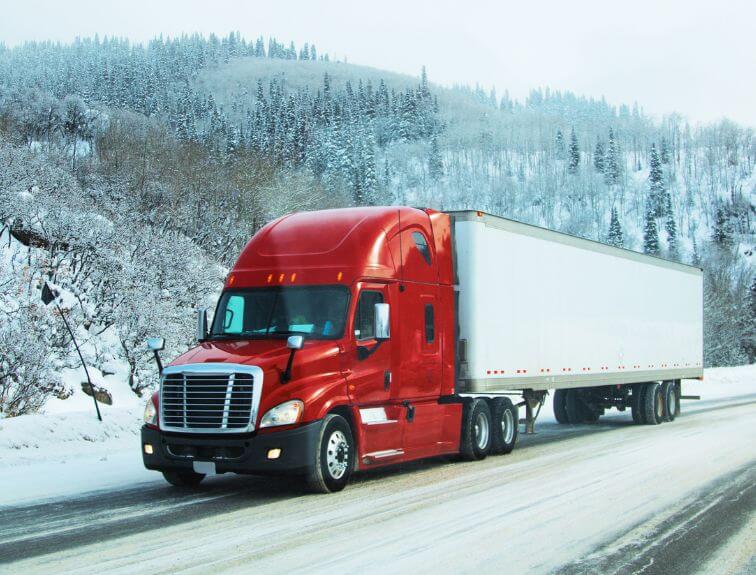
6 Tips For Winter Trucking
Stay Safe Driving in Snow and Ice this Winter
Along with cold weather, the winter season brings with it a number of dangerous conditions that truck drivers have to battle. These include increased snow and ice, slippery roads, and shorter days with less daylight. Before jumping in the cab and hitting the road, you’ll want to make sure you’ve prepared your truck, and yourself, for the cold days ahead.
1. Adjust Driving Habits
When you’re working on a deadline, it can be tempting to rush. Unfortunately, that can quickly increase your risk of an accident. In winter conditions, it’s important to adjust your driving habits accordingly. Slowing down and giving yourself more time to get to your destination can help keep you safe.
With the addition of snow and ice, your stopping time won’t be the same. There are three things you’ll want to add together to determine your total stopping time:
- Perception Distance: The distance your vehicle travels from the time you see the hazard to the time your brain recognizes it
- Reaction Distance: The distance you continue to travel before you physically hit the brake
- Braking Distance: The distance traveled while you are braking
With these things in mind, be sure to leave a buffer between you and other vehicles. This added space will allow you to maneuver more freely, going around potential obstacles instead of trying to come to a sudden stop.
2. Establish a Winter Maintenance Routine
Inspecting your truck before a trip is essential, but as the colder months approach, you may want to start checking some extra areas as well. Take a look at your equipment: is everything in top shape? Ensure that your windshield wipers are in good condition, all lights are cleaned off and working properly, tires are snow and ice-ready, and check anything else that may be of concern.
3. Switch to Winter Blends
While the colder months can take a toll on your rig, some simple switches can help keep things running smoothly. As you may already know, diesel fuel can turn into a gel in the cold. Thankfully, there are different blends of fuel that contain higher levels of cetane, making it easier for your engine to start and keep warm. Another easy switch to make is a cold-temperature windshield wiper fluid. Keeping these and other cold-weather blends of fluids on hand is sure to come in handy.
4. Emergency Supplies
You never know what can happen while you’re out on the road, especially during the winter. One of the best ways to be prepared for anything is to pack for everything. Though keeping general supplies on hand should be a given, you may want to consider packing some other emergency supplies before your next trip such as:
- Winter gear (coat, gloves, boots)
- Heated blankets
- Food and bottled water
- First aid kit
- Flashlight
- Snow shovel
- Extra windshield wipers
Adding these emergency items may come in handy if you find yourself in a tough situation and aren’t able to receive help right away.
5. Watch Conditions Carefully
Paying extra attention to your surroundings is imperative when visibility is lowered due to a lack of daylight and increased snowfall. Listen to what the other drivers around you are saying about the road ahead. Keep an eye on tire spray so you’re aware of what you’ll have to deal with as you drive down the road. Pay attention to the weather in the areas you’ll be traveling through so you know what to expect when you get there and are dressed accordingly.
6. Take Care of Yourself
The most important thing you can do to prepare for the winter season is to take care of yourself. Staying hydrated is critical when spending long periods of time in the cold. As always, eat nutritious foods and snacks to keep your energy levels up and take breaks when needed.
While trucking in the winter can come with some challenges and unpredictability, being prepared can make life on the road just a little bit easier.

